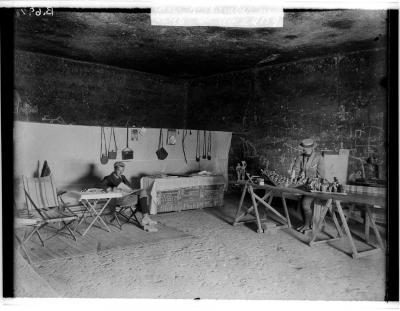Liverpool Institute of Archaeology, University of Liverpool
Garstang's fieldwork was funded by a series of 'Excavation Committees' - a group of mainly private patrons (the Musee Cinquantenaire in Brussels was one institutional exception) who would receive a proportion of the excavated finds from each season as a return on their investment. Several of these patrons were philanthropists who donated their 'dividend' to appropriate institutions - what was later to become the Garstang Museum of Archaeology at the University of Liverpool was a major beneficiary of such gifts - although other individual collections amassed by this process were either given away in a less structured manner or found their way onto the auction market. On occasion the quantity of objects found by Garstang (especially those perceived to be of a less collectable quality) was in excess of those required for distribution to his backers; while at Beni Hasan he famously published a letter in The Times on February 18th, 1904 offering for free (apart from shipping costs) crates of Middle Kingdom ceramic vessels to any educational institution which wanted some.

John Garstang and his assistant Harold Jones in their field headquarters at Beni Hasan (Egypt), which they set up inside a tomb dating to the Egyptian Middle Kingdom (1975-1640bc). Negative B.692. Courtesy of the Garstang Museum, University of Liverpool.
